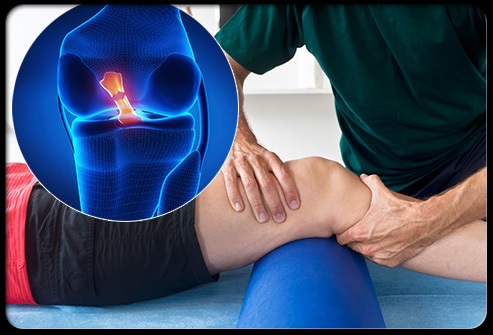The tearing of the anterior cruciate ligament or ACL (one of the knee’s major ligaments) is called an ACL injury.
ACL injuries often occur in sports that entail hasty changes in direction and sudden stops like soccer, football, downhill skiing, basketball, gymnastics, and volleyball.
Depending on the severity of the ACL injury, treatment options can range from rest and rehabilitation to surgery.

The following are the key goals of ACL surgery:
- Restore normal (or at least close to normal) knee stability
- Minimize loss of function
- Prevent degeneration and injury of other knee structures
While surgery will not be required for all ACL tears, both the patient and the doctor will have to decide if rehabilitation alone or rehabilitation and surgery would be best.
Surgery would be the most apt treatment option in the following cases:
- The ACL has been partially or completely torn and the knee has become really unstable.
- The patient wants to engage again in sports that require knee stability and strength.
- The patient is willing to adhere to a rigorous and long rehab program.
- The patient has been through a rehabilitation program yet the knee remains unstable.
- The patient has chronic ACL deficiency and the condition is affecting the quality of life.
- Other parts of the knee like the meniscus, cartilage, and tendons have also been injured.
Surgery is often not necessary or recommended in the following cases:
- The ACL tear is minor and can be treated through rehab and rest.
- The patient is not engaged in any sports and is not involved in an occupation that requires a stable knee.
- The patient is willing to complete a rehabilitation program that can strengthen the leg muscles and stabilize the affected knee.
- The patient has other medical conditions that may make the ACL surgery too risky.
- Generally, ACL surgeries are safe.
- However, there are still certain complications that can arise during rehab and surgery such as:
- Damage to blood vessels, structures, and nerves in and around the knee
- Leg blood clots
- Infection in the incisions
- Reinjury, stretching,and loosening of the scar tissue
- Kneecap grating
- Pain (especially when kneeling)
ACL surgery involves either repairing or reconstructing the ACL.
- ACL repair surgery is done if an avulsion fracture (a piece of the bone and the ligament is separated from the rest of the bone) occurred. The procedure will reattach the bone fragment (connected to the ACL) to the bone.
- ACL reconstruction surgery on the other hand replaces the ligament using a graft. Autograft (using parts of the patient’s own body like the hamstring or the patellar tendon) is considered the most common. Another option is aliograft tissue, taken from a deceased donor.

- ACL surgeries are carried out by orthopedic surgeons. In most cases, it is done by making small knee incisions and inserting the surgical instruments in the incisions.The aforementioned method is called arthroscopic surgery. Other times, the procedure is done by making a large incision in the knee. This procedure is otherwise known as open surgery.
Many orthopedic surgeons however prefer arthroscopic over open surgery because of the following reasons:
- It comes with fewer risks
- Seeing and working on the knee structures is a lot easier
- The incisions made are smaller
- It can be carried out at the same time as diagnostic arthroscopy
Arthroscopic surgery is done under general or regional anesthesia.
Arthroscopic surgery is an outpatient procedure so there is no need for the patient to be confined or spend the night in the hospital.
After the surgery, patients can feel very tired and this can go on for a few days. Swelling of the affected knee might also manifest and numbness around the incision will be likely.
Fortunately, putting ice on the swollen area can be an effective way to reduce the swelling. In most cases, all signs of pain, swelling, and discomfort will eventually disappear after several days.
